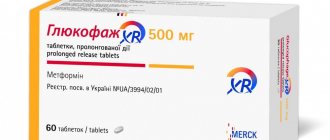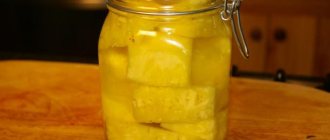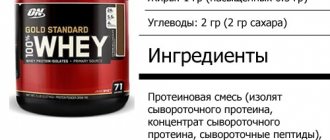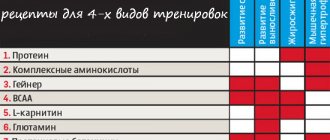How much protein should you drink?
For muscle growth, the minimum protein you need to take is 1.5 g per 1 kg of body weight. A good indicator is 2 g of protein per 1 kg of weight.
The problem with protein is that your diet can often lack it. Our daily diet is much richer in fat and carbohydrates than in proteins.
To determine how much extra protein you need to take, you need to know not only how much you weigh, but also how much protein you get from regular foods. On average, a person eats 1 g of protein per 1 kg of body weight.
You also need to know that there are not exactly as many grams of protein in a protein powder as there are in a can. Typically, 100 g contains about 70% protein. This means that if you weigh 70 kg, you need to take 100 g of 70% protein. Weigh more, take more.
Another factor that will also matter is the intensity of the workout (or whether there is a workout that day at all).
Daily Value of Protein (grams)
| body weight % protein | 50 kg | 60 kg | 70 kg | 80 kg | 90 kg | 100 kg |
| 90% | 56 | 67 | 78 | 89 | 100 | 111 |
| 80% | 62 | 75 | 87 | 100 | 112 | 125 |
| 70% | 71 | 86 | 100 | 114 | 128 | 142 |
| 60% | 83 | 100 | 117 | 134 | 151 | 168 |
| 50% | 100 | 120 | 140 | 160 | 180 | 200 |
Calculate how much extra protein powder you need based on the amount of protein you typically get from food. During the period of mass gain, a man needs 200-300 g of protein per day, a woman - 150-200 g. The measuring spoon, which usually comes with protein, is 30-50 g of powder.
— As a rule, people turn to a nutritionist and fitness trainer with the question of how to lose weight. What interests me is how to get better. I wouldn't mind some moderate body contouring. A gym instructor told me to start using protein powder. I've heard conflicting reviews about it. Is it worth using? Is there any point in eating protein if you are not a competitive athlete? How to determine your daily protein intake?
Answers Kalinchev Alexey, endocrinologist, nutritionist, dietitian :
— According to statistics, in Northern Europe and North America up to 60% of the population is obese. This means that 40%, i.e. almost half do not suffer. Many fitness club visitors do not need to lose weight, but rather gain muscle mass, increase strength, and train endurance.
I recommend starting your classes with a body composition study procedure. It will show you how much muscle and fat you have in kilograms. This is important for further objective control. You can’t judge by bathroom scales; they measure everything together. Repeat this procedure about three times a month, then the dynamics will be clear, and you will be able to rebuild your training process and nutrition in time. Now such devices are available everywhere, the cost of research is 1-1.5 thousand rubles.
The standard recommendation when trying to gain muscle mass is to drink a gainer, a sports product containing proteins and carbohydrates in a ratio of 1 to 3. I would recommend that you prepare it yourself rather than buy a ready-made product. There will be more benefits from it. It’s easy to make your own gainer. It is enough to add a little sugar to the protein, 1-2 teaspoons maximum.
Before training you need to eat, no one should ever exercise on an empty stomach! During training, you can drink sweet water and juice. Immediately after - homemade gainer or protein and something sweet. There is a theory of a protein-carbohydrate anabolic window that needs to be closed. Most fitness enthusiasts follow this recommendation.
Protein does not pose any health hazard. There are several types. The main ones: whey, egg, casein and complex. I recommend reading about them in detail; the information will be on any sports online store website. I would advise you to opt for whey or complex.
When gaining weight, it is recommended to eat about 2 grams per day. protein per 1 kg of weight. That is, if you weigh 70 kg, then you need to eat 140 grams. squirrel. More is dangerous due to the toxic effects of nitrogen metabolism products. The well-known and banned in many countries Dukan diet has been criticized precisely because of its high protein content. 2 gr. – optimal norm. You must collect this number from all sources. Usually they only consider essential ones, like chicken breast – 20g. In 100 gr. product, hard cottage cheese - also 20 gr., eggs (up to 3 of them a day whole), 1 medium - 5 gr. protein, i.e. 2 eggs – 10g. protein and 3 eggs – 15g. protein, respectively. I recommend rounding and simplifying, this will make it easier for you to count and you won’t get lost. Do not take into account cereals, bread, etc., they do not contain complete protein and there is little of it.
You should definitely drink a portion of protein (20-25 grams of protein) or a homemade gainer immediately after training for 15 minutes, then eat a banana and/or yogurt. After 1 hour you need to have a full meal. It is recommended to eat cottage cheese at night; it is a difficult-to-digest protein (casein), it will enter the bloodstream during sleep. It is better not to eat meat at night, it is difficult to digest and you will not feel comfortable. In the morning on an empty stomach, also drink a portion of protein, and only then have breakfast.
Thus, your conditional 140 gr. The protein will be supplied to your firebox in fractions, in uniform portions of 20-25 grams. This is ideal for digestion and comfortable well-being. For example, 2-3 servings of protein, 20-25 grams each. and the rest in the form of regular food, for example, 100-200 gr. cottage cheese, 150 gr. chicken breast, 150-200 gr. fish, 3 eggs, etc.
#gain weight #protein #sports nutrition
Previous “I don’t want, I won’t” or popular excuses when playing sports
Next Top 5 natural teas for weight loss
Leave a comment (Cancel)
How to take protein
To mix a protein shake efficiently, it makes sense to purchase a blender - this device will prepare your shake completely without lumps. If you don’t have a blender, use a shaker (blender bottle - usually inside such a bottle there is a whipping ball that needs to be shaken properly). It is customary to mix protein with water or milk (some, by the way, use juice). The amount of water does not matter; usually the optimal amount of water for 1 cocktail is written on the powder packaging. For example, take 30-50 g of powder and 300 ml of liquid (0.5% milk, water, kefir, juice). The only rule: mix the powder with cold or room temperature water. In hot water, the protein denatures (coagulates) and loses a number of its properties.
What happens if you mix protein with other ingredients?
So, you've finally bought and brought home a package of high-quality protein. What's next? At this stage a problem may arise. Below are the two most common ways to use protein powder throughout the day and specific directions for each.
Food Substitution
If you wake up later than usual in the morning and are late for work, you have very little time to prepare a nutritious breakfast. In this case, a protein shake can help you out. St. Pierre recommends adding vegetables, one or two servings of fruit, a serving of saturated fat, and a couple of scoops of protein powder as a base. He and the team at Precision Nutrition came up with a term for these kinds of meal replacements: “super shakers.” These shakes can be used as meal replacements or as a meal supplement if your goal is to gain weight. A healthy recipe that is suitable for both men and women:
Men
- 2 scoops protein powder
- 1-2 cups vegetables (such as spinach, which will not affect the taste)
- 2 handfuls of fruit (fresh or frozen)
- 2 tablespoons saturated fat (nuts, butter, or seeds)
- Liquid part (almond milk, regular milk, water - your choice)
Women
- 1 tablespoon protein powder
- 1 cup vegetables
- 1 handful of fruit
- 1 tablespoon saturated fat
- Liquid part (almond milk, regular milk, water - your choice)
These recipes bring up another important topic: gender differences. Fitness supplements are often perceived as just for men, but protein shakes are also effective for women. However, St. Pierre notes that women's nutritional needs are slightly different. They require less protein per unit of body weight (primarily due to differences in body composition). For this reason, he recommends women add one scoop of protein powder instead of two. However, he admits that this is not entirely the right decision. “The point is not that women should share half the norm intended for men. You can measure it based on your personal needs,” says St. Pierre.
Gender differences aside, if these smoothies are so nutritious, why don't you just mix one of them in a mixer after every meal? St. Pierre warns that despite all the benefits, cocktails cannot replace food. “Natural foods contain a lot of nutrients that powder cannot replace,” he says. Also, sometimes not all nutrients and vitamins can be absorbed. For this reason, he recommends consuming no more than two servings of protein per day. Don't rely entirely on cocktails, and don't neglect your main meals during lunch and dinner.
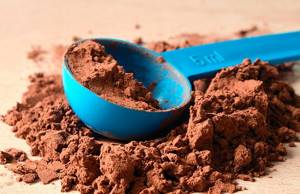
Taking Protein After a Workout
A short period of time after a workout allows you to drink a protein shake to replenish lost nutrients; such shakes and a mixer have become an integral part of going to the gym. If you don't wait to take protein immediately after your workout, you may benefit from it and improve your workout results. Taking protein after a workout has been proven to be beneficial and help restore strength after grueling exercise, as well as increase endurance and muscle mass gain. However, these confirmations may be a bit exaggerated. St. Pierre admits that post-workout nutrition is important, but it shouldn't be given too much importance. "It's generally a good idea to have one shake immediately after finishing your workout, but this ritual is not necessary," he explains. "Don't freak out just because you didn't have time to drink a smoothie right after you finish working out."
So how should a post-workout protein shake fit into your diet? It depends on your personal preferences. Previously, it was believed that protein shakes were absorbed faster in the stomach, unlike ordinary products, and provided rapid muscle building due to the supply of nutrients. According to St. Pierre, new research has proven that this is not entirely true. He advises his clients to do what is most convenient for them. “If you want to have a cocktail, well, that's great. If you want to eat, that's okay too. Any of the options is correct, and the choice depends on you personally,” says the coach. The sensitivity of the gastrointestinal tract also matters. Some people don't feel well if they eat immediately after exercise. In this case, taking a protein shake would be more appropriate for them.
It would seem that protein powders have become an integral part of a healthy lifestyle, just like high-tech fitness trackers and sports shoes. Although protein shakes can be considered a convenient product, this does not mean that they should be taken on a regular basis. Healthy foods are still the main source of vitamins and nutrients. The best way is to combine foods from your healthy diet and use protein powder as a convenient and healthy supplement.
Source: dailyburn.com/life/health/how-to-use-protein-powder/
How to drink protein - before or after meals?
Protein intake is not related to or dependent on meals - it depends on your goals. It is best to divide the daily dose into 2-3 doses - it will be difficult for the body to absorb such an amount of protein at once. Take protein between meals. It is best to take it at noon and immediately after training to close the protein-carbohydrate window. Secret: if you mix protein with creatine after a workout, muscle growth will be explosive. You can also consume protein before training to create an amino acid pool that will allow you to train more effectively.
If you're losing weight, protein may be the perfect meal replacement for you. For example, use it instead of snacks or replace it with dinner. This will increase the amount of protein you consume per day without increasing your daily caloric intake.
Protein: Why and why you need to take it
Many fitness enthusiasts buy protein and add it to their diet without even realizing why they are taking protein or whether they need it at all. According to Brian St. Pierre, a sports nutritionist and nutrition coach, protein meets the body's daily requirement for protein, so it should be added to your diet. However, protein powder is not a panacea. "If you're meeting your protein needs through food, that's fine," says St. Pierre. If you take 3-4 servings of natural protein per day, at the rate of 1 gram of protein per 400 grams of weight, then there is no need to take protein powder. But otherwise, protein can become your true ally.
Although labels may say otherwise, the protein composition is essentially the same across the board. All protein powders contain only what is supposed to be there - protein made from whey, soy or other raw material. Also on the packaging you can find terms like “hydrolyzed”, “the latest achievement of science”, etc. St. Pierre argues that the desire to purchase protein that is “better absorbed” is wrong, his opinion is also similar to research data on this issue. “Many companies will insist that you only buy their products made from grass-fed or cold-filtered whey,” says St. Pierre. "It's possible their products are actually better, but you can't tell by how much."
So, if the cost of a protein powder does not affect its quality, then what should consumers look for when purchasing? St. Pierre recommends purchasing products from a well-known manufacturer that has a good reputation in the market (their protein packaging indicates detailed composition). He also encourages purchasing products that have undergone veterinary inspection and certification from organizations such as Informed Choice. These types of companies purchase products from stores and conduct various tests to ensure that the product contains exactly what is written on the label.
Once you've settled on a few well-known sports nutrition brands, pay attention to the nutritional and energy content. While the numbers and data may seem confusing at first glance, St. Pierre recommends simply looking at the product's characteristics. He likes protein that is low in fat and carbs.
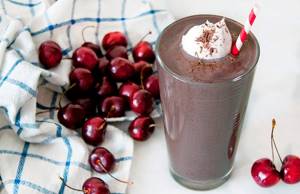
How to consume protein depending on the type?
All protein mixtures that the sports nutrition market offers today can be divided into several categories:
- Isolate and concentrate;
- Hydrolyzate;
- Complex protein;
- Casein.
If you decide to purchase several types of protein at once, then you need to know the correct dosage regimen, because each of these types of mixtures is intended for different purposes. But before you start taking it, you need to remember the optimal amount of protein for athletes working out in the gym. That's 2 grams for every kilogram of your body. Within this volume, it is necessary to distribute the consumption of all types of protein.
Isolate and concentrate

Concentrate is the most common form of protein mixtures and the most affordable. In addition to protein, the composition may include carbohydrates, lactose and saturated fats. This is a universal type of protein that can be consumed morning, afternoon and evening.
Isolate, unlike concentrate, has a better degree of purification. It contains virtually no carbohydrates, fats and lactose. Isolate can be classified as “fast” proteins. It takes approximately 30-40 minutes for it to be completely absorbed by the body. Therefore, it is well suited for consumption after training and especially in the morning.
Both concentrate and isolate can be mixed with water or milk. To do this, you need to take one serving, pour it into a shaker and add milk or water. As a rule, protein cans already have a measuring spoon, which is convenient for measuring portions.
Hydrolyzate
Hydrolyzate is a form of protein that is 99% protein. That is, it is an isolate, but has already undergone even deeper purification from impurities. This processing makes it possible to call hydrolyzate the most effective form of protein mixtures, because the product is already partially broken down protein. This makes it, unfortunately, the most expensive type of protein, but in terms of absorption speed it is not inferior to anyone.
In addition, the hydrolyzate has better tolerability. Just due to the absence of impurities (lactose, fats and carbohydrates), this type of protein mixtures can be safely consumed by allergy sufferers and people suffering from lactose intolerance.
When it comes to ideal intake times, many athletes prefer to consume this protein before and after training. After exercise, hydrolyzate is especially useful because it helps to quickly replenish protein reserves and begin the process of muscle tissue restoration.
Remember! Hydrolyzate can only be dissolved in water!
Complex
Above we looked at the features of taking whey protein. But complex protein mixtures are becoming increasingly popular in the sports nutrition market. The name speaks for itself, and it is obvious that the manufacturer has combined several types of proteins in one jar.
Complex protein can be considered a universal solution for replenishing protein reserves. It can be used in the morning, during the day, and at night. It is advisable and recommended to take it also before training and after training in the gym. Taking it before training will help provide the body with the necessary amino acids that will prevent the muscles from burning out.
This is a protein for all occasions, and for those who do not want to bother with choosing a sports nutrition category. However, it must be remembered that such a complex of proteins can greatly burden the gastrointestinal tract. In some cases, it is still wiser to purchase separate types of protein mixtures in order to control the intake of proteins in the body and not put an excessive burden on digestion.
A standard serving of complex protein is approximately 30 g. It must be mixed with 200-300 ml of water, juice or milk.
Casein
Casein protein is a type of slow protein. Casein protein mixtures are made from casein, which in turn is formed from caseinogen. Milk, if anyone knows, is 80% casein, the remaining 20% is whey protein.
Perhaps someone knows another statement that it is better to eat cottage cheese at night, because it contains “long-lasting” protein. That's right, casein is found in all dairy products, including cottage cheese. It is called “night” protein precisely because of its ability to be absorbed in the body for a long time and not allow the development of catabolic processes. The supply of essential amino acids occurs throughout the night, so muscles are not destroyed while we sleep.
Casein is also actively used for weight loss. Its properties help us get a feeling of fullness and satiety for a long time. This blocks hunger, and the person does not consume too much. In this case, there is a loss of fat cells, but not muscle cells, because the latter receive a sufficient amount of amino acids.
Several bonus recipes

For those who are tired of the taste of standard cocktails, we will tell you how to drink protein correctly and tasty!
Recipe No. 1
- 40 g protein;
- 300 ml milk;
- 1 banana;
- 25 g walnuts;
- 2 tbsp. honey
Mix all ingredients and turn into a homogeneous mass with a blender. One such cocktail will replace a full meal.
Recipe No. 2
- 250 ml kefir;
- 40-50 g of protein;
- 4 tsp cocoa;
- 100 ml water;
- stevia (sweet substitute).
Dilute cocoa powder and stevia with water and cook until boiling. Cool the resulting liquid and add kefir with protein. Beat with a blender until smooth. It tastes better when drunk chilled.
Whey protein during drying
Sports doctors and “advanced” weightlifters advise taking whey protein when working “for relief”, when “drying” the body.
They use the following algorithm:
- Morning “stop signal” for catabolic processes: one scoop of whey protein.
- Daily maintenance norm: reduction in the total calorie content of food, one or two servings of whey concentrate.
- Training cocktail: one hour before exercise and for 90 minutes after training.
- Combating nighttime catabolism: complex cocktail or casein.
What should I dissolve the protein in (water, milk or juice)?

Almost all forms of whey protein can be dissolved in water, milk or juice. The only exception is hydrolyzate, which loses its beneficial properties when in contact with milk or juice. It is taken only with water.
For other types, the ideal liquid is low-fat milk. The drink will be filled with calcium, slow carbohydrates and high protein.
If you don’t like dairy products, then feel free to use juices. A juice-based protein shake will sparkle with new flavors, and fast carbohydrates will speed up the absorption process.
Important! Protein powder and carbonated drinks are not the best combination, which can lead to stomach discomfort and bloating.
Morning reception
During 8 hours of sleep you do not receive food, the body uses up evening energy reserves in the form of amino acids (the process of destruction of muscle tissue) and glycogen from the liver. At the same time, muscle tissue is catabolized due to the steroid hormone cortisol. By destroying muscles, it pushes the body to deposit fat. To remove destructive processes, take a “fast” protein shake in the morning. At your morning meal, nutritionists advise having breakfast with a portion of whey protein hydrolyzate.
Destructive forces do not affect muscle tissue, having received a dose of beneficial biological additives.

